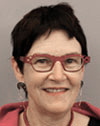
On Sept. 19 about 100 Kitigan Zibi Anishinabeg community members and other supporters, including Shawn Atleo, the national chief of the Assembly of First Nations, kicked off an “education awareness” walk from their homes near Maniwaki, Que, to Ottawa. The group walked 150 kilometres, arriving in Canada’s capital Sept. 23, where they were joined by hundreds of students, educators, parents, elders and allies, including CAUT representatives, at Victoria Island to march to Parliament Hill for a rally and cultural event highlighting the ongoing crisis in First Nations education.
Seeing the crowd on the Hill, I couldn’t help noticing that my presence raised the average age by a year or two. This underlines the importance of education to First Nations people. About half of the Aboriginal population is under the age of 25.
When it comes to education, from primary through post-secondary, a slew of recent reports, commissions and statistical data demonstrate the need for concern. Too many Aboriginal students are not finishing secondary, or even primary, school. In 2006, Statistics Canada estimates that 34 per cent of Aboriginal adults between the ages of 25 and 64 were not high school graduates. In his important report “Aboriginal Peoples and Post secondary Education in Canada,” Michael Mendelson, senior scholar at the Caledon Institute of Social Policy, argues that the key to increasing Aboriginal participation in the post-secondary system is to increase the pool of high school graduates.
Although those Aboriginal students who complete high school are as likely as non-Aboriginals to complete some form of post-secondary education, they are much less likely to go to university. Of the 2006 Aboriginal population, it is estimated that about eight per cent were university graduates, approximately one-third of the 23 per cent figure for non-Aboriginals. Alarmingly this gap has widened since the 2001 census. In addition, 19 per cent of Aboriginals have a college diploma and 14 per cent reported having a trade qualification. CAUT’s 2010 Almanac reports that in 2009, three per cent of first degree graduates self-identified as Aboriginal.
While both financial and non-financial barriers prevent Aboriginals from pursuing a post-secondary education, the financial issue is central. Since 1989, funding for First Nations and Inuit education has been mainly provided through the Post Secondary Student Support Program (PSSSP). Non status First Nations and Métis students are not eligible for this funding.
PSSSP funding is provided through Indian and Northern Affairs Canada to individual communities for distribution to their members. Unfortunately, this funding is not sensitive to regional or other variations in need. Since 1996 funding increases have been capped at two per cent annually without regard to an increased number of eligible students, not to mention rising tuition fees, inflation, and higher living and travel costs.
This arbitrarily-imposed cap on PSSSP has meant disappointment for many students hoping to pursue further education. According to the Auditor General’s 2004 report, some 9,500 qualified students were denied further education due to lack of funding. The number has been mounting since. In 2007, the report of the Standing Committee on Aboriginal Affairs and Northern Development noted that “inadequate funding under the PSSSP presents a critical and ongoing obstacle that hinders significant numbers of First Nations learners from taking advantage of post-secondary opportunities.”
In testimony before the committee, witnesses spoke of hundreds of eligible students denied funding and waiting lists of as much as five or six years. Key recommendations of the committee’s study include eliminating the two per cent annual cap and basing spending increases for post-secondary education on actual costs associated with the program components. The committee further recommended “…that the Department (INAC) make it a priority to provide adequate funding under the PSE Program to every eligible First Nations and Inuit learner and put in place a plan to achieve that priority by the end of 2007.”
The government response to the committee’s report was a disappointing refusal to provide full funding for qualified students. The government indicated its intention to review the PSSSP program over the next two years. The First Nations community is concerned this signals a move to bring the PSSSP into “mainstream” funding under the Canada Student Loans Program. Such a change has been vociferously rejected by First Nations on the grounds it would abrogate their treaty rights to post-secondary education.
In this short column, there is no way to do justice to the many and complex issues of post-secondary education for Aboriginal students. But one important area of neglect is data collection. Finding adequate data on historically marginalized groups and racialized communities in Canada is a frustrating and frequently disappointing task. For Aboriginal students and potential students the failure to collect relevant data has meant important issues such as the number of eligible students denied funding because of budget shortfalls are not measured or tracked. It also means that information critical to planning, including information about student progress and employment, is not being collected at the level of local communities.
The outrageous cancellation of the mandatory long-form census will have a devastating impact on the ability of the First Nations community to describe itself and to track social change. And an additional punishment for Aboriginals is that it will be impossible to conduct a historically comparable version of the Aboriginal Peoples Survey, a special, detailed “post-censal” survey on the social and economic conditions of Aboriginal people in Canada, whose sample was based on the mandatory long-form census. Shame on those who now govern.